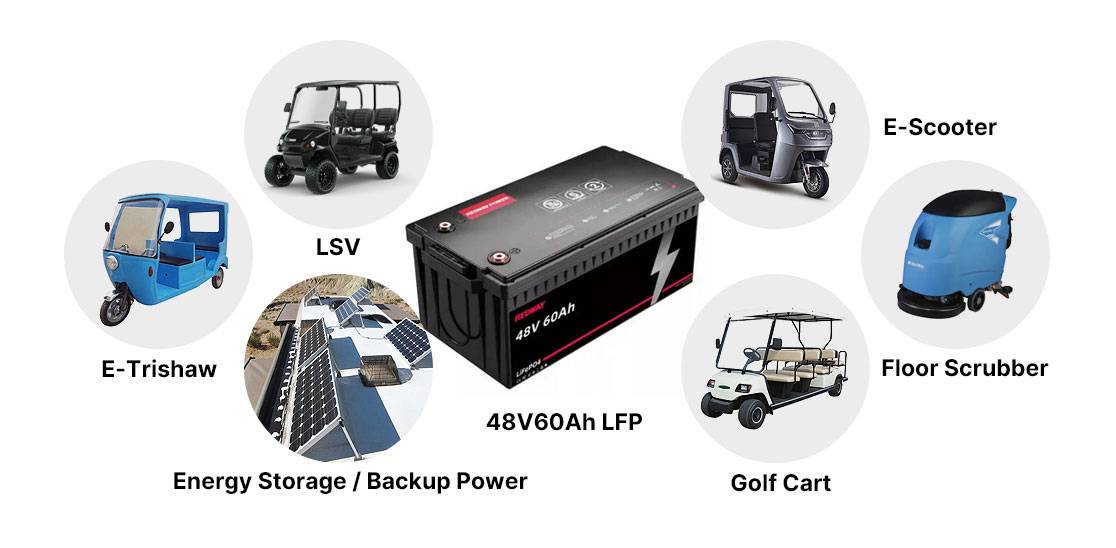Dive Board
-
Need to Know About 48V 8D Lithium Battery
Need to Know About 48V 8D Lithium Battery
by dillianchesky on Apr 22nd, 2024 13:28 PM

[justify]An 48V 8D Lithium Battery typically refers to a group size battery measuring 21x11x10 inches in dimensions. If you're selecting batteries for off-grid systems, solar cells, RV battery packs or industrial applications you will likely come across one or more 8D group cells as they will often form part of their selection process.[/justify]
[justify]There are currently two primary forms of 48V 8D Lithium Battery on the market - lead-acid 8D batteries and lithium 8D batteries.[/justify]
[justify]Lithium batteries offer numerous advantages when it comes to cycling life, weight, charge and discharge rates as well as overall reliability; gradually replacing lead acid 8D batteries over time.[/justify]
[justify]How Long Will 48V 8D Lithium Battery Last? [/justify]
[justify]Lithium 8D batteries typically provide between 4,000 to 1,500 cycles before needing replacing; lead acid batteries tend to fail sooner.[/justify]
[justify]Lithium 8D batteries require much lower maintenance than their lead acid counterparts; 8D lead acid batteries needing regular top ups with water in order to protect their lead plates inside, becoming damaged if left exposed to extremes in temperature or extreme cold or heat. But lithium 8D batteries come sealed and maintenance free![/justify]
[justify]How Can 48V 8D Lithium Battery 's Life Be Extended? [/justify]
[justify]Proper care of our 8D battery and compliance with its principles can greatly prolong its longevity, thus increasing its life.[/justify]
[justify]Improper battery use will shorten its lifespan significantly.[/justify]
[justify]Here are a few pointers for making sure your 8D battery last longer:[/justify]
[justify]Charging Tips[/justify]
[justify]Regular Charging. Under normal conditions, when an 8D battery reaches critical low levels it will display an alert stating it has no power left and needs replenishing immediately. While being too low will not lead directly to any accidents but overuse may eventually damage its structure over time.[/justify]
[justify]Do not overcharge. A lithium battery cell contains multiple components. While new batteries tend to perform well when first purchased, with use comes diminishing components' functionality and an overcharge safety risk that poses long term harm. Overcharging 8D batteries often has adverse impacts over time and should always be avoided for best performance and lifecycle management.[/justify]
[justify]Use an appropriate charger when charging batteries - do not attempt to use incompatible chargers as this could completely drain an 8D Battery! - and follow our tips in order to avoid completely draining its charge.[/justify]
[justify]Once your battery indicator indicates it has become low, act swiftly to charge it immediately.[/justify]
[justify]Allowing the battery to deplete completely will have detrimental repercussions for its lifespan and may impair performance.[/justify]
[justify]As soon as your battery runs low, please charge it immediately to extend its use.[/justify]
[justify]Maintenance Tips[/justify]
[justify]Daily maintenance should aim at placing lithium batteries in an optimal environment in order to postpone their depletion due to age and prolong its useful life.[/justify]
[justify]Here are two maintenance guidelines we need to follow.[/justify]
[justify]1. Keep out moisture.[/justify]
[justify]2. Additionally, avoid direct sunlight.[/justify]
[justify]Group 8D Lithium Vs Lead Acid Battery Depth of Discharge To maximize charge/discharge cycles on an 8D lead-acid battery, its DoD should remain approximately 50%.[/justify]
[justify]Lead-acid batteries that have been reduced to between 80-100% DoD will experience approximately 200-400 charge/discharge cycles per annum, making their charge/discharge cycles easier on batteries overall.[/justify]
[justify]LiFePO4 cells discharged to 80-100% depth of discharge have no detrimental impact on cycle life; an 8D lithium battery supports 4000 cycles lifespan.[/justify]
[justify]So there is an enormous variation between DOD and cycle life for both parts.[/justify]
[justify]Lithium batteries weigh just one-third as much as their lead-acid counterparts.[/justify]
[justify]Lead-acid batteries contain two hazardous chemicals - sulphuric acid and lead. Both substances pose serious safety threats when operating them, with potential acid splashing onto skin or eyes of maintenance personnel performing tasks, potentially leading to permanent injury or blindness. Therefore, wearing personal protective equipment (PPE), including splashproof goggles, an acid resistant apron, face-shields and rubber gloves will serve to ensure safe battery maintenance procedures are carried out.[/justify]
[justify]Temperature control for lead acid batteries charging is very essential to ensure their safe usage and maintenance. Since you could encounter an explosion resulting from mixing hydrogen (H2) and oxygen (O2) gases during charging, temperature regulation plays an extremely crucial role.[/justify]
[justify]If the charging room is improperly ventilated, there is also the risk of explosion. As part of preventative measures, hydrogen sensors should be installed at the ceiling of any rooms where lead-acid batteries are charged.[/justify]
[justify]However, 36V golf cart lithium battery are sealed units. Therefore there is no risk of acid spills, corrosion or any sort of workplace contamination due to leakage from acids spills in them.[/justify]
[justify]As such, no cases have yet been reported of safety hazards with lithium batteries.[/justify]
[justify]Charging Times[/justify]
[size=2][font=Calibri, "sans-serif"]8D lead acid batteries should be fully recharged within five to ten hours. However, most lithium ion batteries have the capability of fully charging within 1-2h; two to five hours is advised as being optimal.[/font][/size]dillianchesky
Posts: 36
Joined: 07.04.2024
Re: Need to Know About 48V 8D Lithium Battery
by jenson on Jul 24th, 2024 19:36 PM
A detailed overview of 48V 8D lithium batteries is very informative! These batteries are indeed excellent for off-grid systems and RVs due to their long lifespan and low maintenance needs. Portable power stations can be a great addition to your setup. They work seamlessly with solar generators, providing extra power storage and portability. This combo ensures a reliable and renewable power source, perfect for various applications
jenson
Posts: 37
Joined: 16.07.2024
RECENT TOPICS
games
Discovering Technical Analysis for Crypto Trading
Best Educational Apps for Teachers
STATISTICS
Total posts: 175059
Total topics: 42095
Total members: 45330
Newest member: Daniel G.

Meet the
Accepted payment methods





